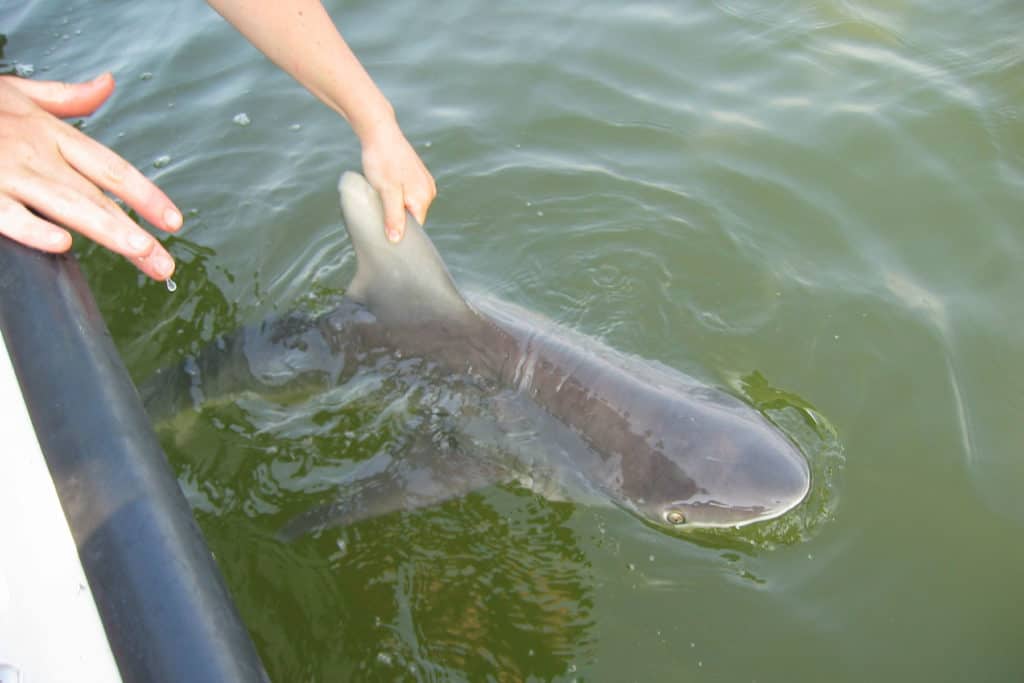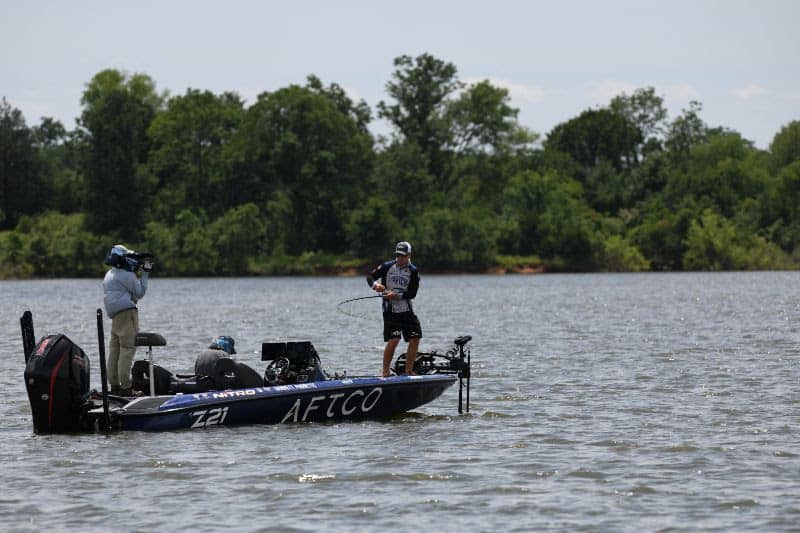When a 12-year-old girl came out of the water at Ocean City with gory wounds consistent with a shark bite, it got the attention of the region’s marine experts. No confirmed shark bite had ever happened to a swimmer close to shore at the popular Maryland beach.
The girl, who was playing in the surf with family near 119th Street on Monday, Aug. 2, had severe lacerations to her leg, according to Ocean City Beach Patrol (OCBP). Surf Rescue Technicians helped treat the girl and transported her off the beach, where she was rushed to the hospital.
OCBP waited to publicly draw any conclusions, saying in a statement, ” At this time, the Ocean City Beach Patrol is working with the Department of Natural Resources (DNR) to determine what caused the injury. Sea life has not been ruled out.”
Then on Friday, DNR confirmed to Bay Bulletin that it was, indeed, a shark bite. “DNR’s experts reviewed photos of the injuries shared by the Ocean City Beach Patrol, and the injuries are consistent with a bite from a sandbar shark. This would be Maryland’s first confirmed, near-shore ocean bite that wasn’t a fishing-related accident,” says spokesman Gregg Bortz.
Bortz recalls that an angler was bitten by a shark in 2014 at Assateague Island while releasing the shark from his line. And a man clamming in Chincoteague Bay was bitten around the same time. But since then, no reports have been officially confirmed.
In this case, there were no known sightings of a shark in the surf.
Ocean City Beach Patrol Captain Butch Albin points out, “With no eyewitnesses seeing the shark we will never know with certainty.” But Albin says one of the experts consulted in this case is Captain Mark Sampson, an author specializing in sharks of the mid-Atlantic and member of NOAA’s National Marine Fisheries Service Advisory Panel. After seeing pictures, Sampson believes the bite was from a sandbar shark.
Says Albin, “Based on the wound pattern it is important to note that this was a ‘bite’ and not an ‘attack’. It appears that the shark mistakenly bit the 12-year-old and immediately released her, which is indicated by the nature of the wounds she received.”
The sandbar shark is the most common species in the Chesapeake Bay and one of the most abundant species of large sharks in the Atlantic. According to the National Aquarium in Baltimore, sandbar sharks can reach 8 feet long. The Chesapeake and Delaware bays are two of the most important nursery grounds for sandbar sharks in this part of the Atlantic.
The sandbar shark is sought after in international fish markets for its large fins. It is listed as vulnerable on the International Union for Conservation of Nature (IUCN) Red List of Threatened Species.
Jay Bradley, Curator of Blue Wonders at the aquarium, notes that sandbar sharks are often near shore feeding on small fish, but are rarely involved in interactions with humans. Shark bites in general are rare, and Bradley calls this an isolated incident. For perspective, Bradley says, there were only 33 recorded shark bites in the U.S. in 2020.
But there are things you can do to minimize the already small risk of interactions with sharks. Bradley says, “It’s important to remember we are entering another habitat where there are many living animals. While these suggestions are not a guarantee, it’s best to avoid swimming alone and at dawn or dusk. In addition, remove reflective objects such as watches or jewelry.”
-Meg Walburn Viviano




